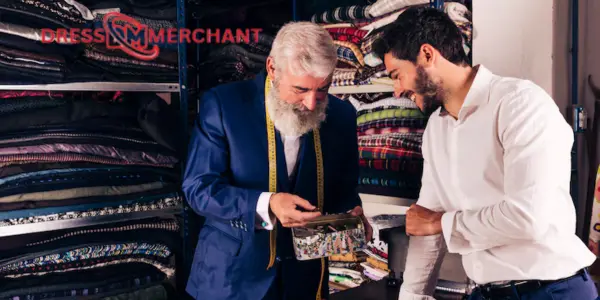Discover the advantages of Sourcing Mens Fashion Clothing from Bangladesh, a global hub for quality apparel manufacturing. With skilled craftsmanship, competitive pricing, and ethical production, Bangladesh offers exceptional value for brands and retailers. Whether you’re seeking trendy styles, bulk production, or custom designs, Sourcing Mens Fashion Clothing from Bangladesh ensures quality, reliability, and efficiency in every shipment.
Thank you for reading this post, don't forget to subscribe!
1. The Rise of Bangladesh in the Global Fashion Industry
1.1 Historical Background
Bangladesh’s emergence as a dominant force in the global fashion industry is a compelling story of transformation, resilience, and strategic development. In the early 1980s, the country’s apparel industry began with small-scale garment factories focused on producing basic items such as T-shirts and trousers. Backed by a large, trainable labor force and low production costs, the sector attracted attention from international buyers seeking cost-efficient sourcing alternatives.
Over time, with the support of liberalized trade policies and strategic partnerships, Bangladesh transitioned from a basic garment producer to a full-fledged player in the global fashion arena.
The formation of the Bangladesh Garment Manufacturers and Exporters Association (BGMEA) and the introduction of export-friendly reforms played pivotal roles in this industrial evolution.
1.2 Global Market Share and Positioning
Today, Bangladesh proudly holds the position of the second-largest apparel exporter in the world, just behind China. Its share in global garment exports continues to rise steadily, reflecting the country’s strong production capacity and consistent quality.
Particularly in the men’s fashion segment, Bangladesh has carved out a niche for itself by delivering competitively priced garments with commendable standards of craftsmanship. From basic shirts to sophisticated suits, international brands source a vast range of men’s clothing from Bangladeshi factories.
The country’s ability to blend affordability with adherence to international compliance standards has earned it trust and repeat business from global fashion retailers and brands alike.
1.3 Government Support and Trade Agreements
The government of Bangladesh has been instrumental in facilitating the growth of the garment sector through policy-level support and diplomatic trade efforts. Duty-free and quota-free access to key markets, especially under the Everything But Arms (EBA) initiative by the European Union and similar agreements with Canada and Australia, have given Bangladesh a significant edge.
Additionally, incentives for green factories, streamlined export procedures, and tax benefits have created a fertile environment for growth. The increasing influx of foreign direct investment (FDI) in textile infrastructure and technology is a testament to investor confidence in Bangladesh’s long-term potential.
1.4 Growth in Men’s Apparel Segment
Initially driven by women’s fashion exports, Bangladesh’s garment industry is now experiencing a robust shift toward men’s apparel, which is growing at an impressive pace. With rising global demand for men’s casualwear, formalwear, sportswear, and even sustainable fashion, Bangladeshi manufacturers are diversifying their portfolios.
Investments in advanced machinery, design capabilities, and workforce training have enabled local factories to meet international standards and rapidly changing fashion trends. Export data over recent years reflects this upward trend, positioning Bangladesh as a reliable and evolving source for high-quality men’s fashion globally.
2. Understanding the Competitive Advantage of Bangladesh
Bangladesh has emerged as a leading global hub for apparel sourcing, particularly in men’s fashion. The country’s competitive edge is built upon a combination of cost efficiency, skilled labor, technological advancement, and a robust supply chain infrastructure. These key elements contribute significantly to Bangladesh’s growing reputation as a reliable and high-quality clothing manufacturing destination.
2.1 Cost Efficiency and Labor Availability
One of the most compelling advantages Bangladesh offers is its remarkably low labor costs. Among all major garment-exporting nations, Bangladesh consistently ranks as one of the most cost-effective production centers. This affordability enables international fashion brands and retailers to significantly reduce their manufacturing expenses while maintaining quality standards. Moreover, the labor force is abundant and readily available, ensuring that even high-volume orders can be fulfilled without delays. This blend of affordability and workforce accessibility gives Bangladesh a substantial edge in the highly competitive global apparel industry.
2.2 Skilled Workforce and Training Programs
Bangladesh has made significant strides in developing a skilled workforce tailored for the textile and garment sector. Numerous vocational training centers, technical schools, and industry-focused institutes—such as the Bangladesh Garment Manufacturers and Exporters Association (BGMEA) University of Fashion and Technology (BUFT)—offer structured programs in garment manufacturing, pattern making, sewing techniques, and quality assurance.
These initiatives help produce a consistent pipeline of trained workers, designers, and supervisors who can meet the exacting demands of global fashion labels. As a result, Bangladesh has cultivated a reputation not just for affordability, but also for professionalism and technical competency.
2.3 Technological Advancements in Manufacturing
In recent years, Bangladesh has made impressive progress in integrating advanced manufacturing technologies. Many apparel factories have embraced innovations such as computer-aided design (CAD) systems, automated fabric cutting machines, and state-of-the-art stitching and finishing equipment.
These investments have elevated the industry’s capability in terms of design accuracy, production speed, and quality consistency. The adoption of lean manufacturing principles and real-time production monitoring tools has further enhanced efficiency, allowing Bangladesh to compete with more technologically mature markets.
2.4 Established Supply Chain Infrastructure
Bangladesh benefits from a vertically integrated supply chain that spans the entire textile production process. From yarn spinning and fabric dyeing to final garment assembly, all operations are streamlined within the country. This integrated approach minimizes lead times, reduces dependency on imports, and ensures faster turnaround for global orders. With well-connected ports, improving logistics, and strong supplier networks, Bangladesh is fully equipped to deliver high-quality men’s fashion apparel on schedule and at scale.
3. Key Categories of Men’s Fashion Clothing Exported from Bangladesh
3.1 Casual Wear
Bangladesh plays a significant role in the global supply of men’s casual clothing, which includes a wide range of garments such as t-shirts, polo shirts, hoodies, cargo shorts, chinos, and denim jeans. These products are widely favored by fast fashion brands, department stores, and online retailers around the world. Bangladeshi manufacturers are known for their ability to deliver large volumes at competitive prices without compromising on fabric quality or stitching durability.
Additionally, advancements in textile printing, garment washing, and sustainable fabric sourcing have allowed the casual wear segment to keep up with changing fashion trends and eco-conscious demands. Brands from Europe, North America, and the Middle East increasingly depend on Bangladesh to supply comfortable, stylish, and affordable everyday menswear.
3.2 Formal and Business Attire
The formal and businesswear segment is a growing area of expertise for Bangladeshi garment manufacturers. This category includes tailored shirts, structured blazers, formal trousers, waistcoats, and suits that meet the expectations of international buyers seeking precision craftsmanship and elegant finishes. High-thread-count cotton, blended suiting fabrics, and wrinkle-resistant materials are commonly used to meet the requirements of office professionals and corporate sectors.
Many factories have adopted automated cutting machines and computerized sewing systems to ensure sharp tailoring and consistent sizing. Major fashion labels from the UK, Germany, and Canada source their formal menswear lines from Bangladesh due to the country’s quality control systems, skilled workforce, and timely delivery schedules.
3.3 Sportswear and Activewear
The rise in global health awareness and fitness lifestyles has created a booming market for men’s sportswear and activewear, including gym t-shirts, compression tops, joggers, sweatpants, and moisture-wicking tank tops. Bangladesh has swiftly adapted to this demand by investing in technical fabrics like polyester blends, elastane, and recycled fibers that support sweat management, breathability, and flexibility.
Several export-oriented factories have dedicated production lines equipped with seamless stitching, bonding technology, and anti-odor fabric treatments, allowing them to compete in high-performance apparel markets. Many international sportswear brands now consider Bangladesh a viable partner for performance gear manufacturing that balances both cost and innovation.
3.4 Winter and Outerwear
Despite its tropical climate, Bangladesh has developed substantial capabilities in producing winter clothing and outerwear for cold-weather countries. Products in this category include puffer jackets, trench coats, parkas, down vests, thermal shirts, and knit sweaters. Leading factories utilize insulation materials like synthetic down, fleece linings, and waterproof membranes to meet international safety and comfort standards.
Moreover, many production units are certified with global compliance audits (such as WRAP, BSCI, and OEKO-TEX), enhancing their reputation among clients in Europe, Canada, and Scandinavia. With a focus on both functional and fashionable outerwear, Bangladesh continues to gain traction in supplying durable, well-constructed winter garments for men.
4. Leading Manufacturing Hubs for Men’s Fashion in Bangladesh
Bangladesh has emerged as a global powerhouse in the garment manufacturing industry, particularly in the domain of men’s fashion. The country’s competitive advantage lies in its vast network of specialized industrial zones, experienced workforce, and world-class infrastructure. Among the many regions involved in apparel manufacturing, a few cities stand out as pivotal centers driving the men’s fashion segment through quality, innovation, and capacity.
4.1 Dhaka
As the vibrant capital and commercial heart of Bangladesh, Dhaka plays a central role in the country’s textile and apparel sector. The city is densely packed with thousands of small to large-scale factories that specialize in all aspects of men’s fashion manufacturing—from basic t-shirts to premium suits and outerwear. Dhaka hosts the headquarters of prominent garment conglomerates and global sourcing companies, making it the nerve center for communication and deal-making with international buyers. Its proximity to skilled labor, design studios, and logistics hubs ensures efficient production cycles. Furthermore, Dhaka’s Export Processing Zones (EPZs) promote streamlined operations, attracting foreign investments in high-end fashion manufacturing.
4.2 Chittagong
Located along the southeastern coastline, Chittagong is not only the second-largest city but also the primary port of Bangladesh. Its strategic location gives manufacturers in the region direct access to international sea freight, making it a preferred hub for bulk orders of men’s apparel. The city supports large-scale textile and garment manufacturing, particularly in denim, trousers, jackets, and cargo wear. Many factories in Chittagong operate with vertically integrated facilities, handling spinning, dyeing, cutting, and finishing under one roof. The efficient logistics and proximity to the Chittagong Port significantly reduce lead times and shipping costs, which is advantageous for global retailers.
4.3 Narayanganj
Often referred to as the “Manchester of Bangladesh,” Narayanganj boasts a long-standing legacy in textile and knitwear production. This industrial city is renowned for producing high-quality knit and woven garments, making it an essential contributor to the men’s fashion export sector. With generations of skilled workers and a dense concentration of factories, Narayanganj specializes in t-shirts, polo shirts, and woven shirts for men. It also serves as a critical hub for local raw material sourcing and garment washing services.
4.4 Gazipur
Gazipur is a rising star in the Bangladeshi garment landscape. Over the past decade, it has transformed into a dynamic industrial district with a strong emphasis on eco-friendly and sustainable production. Many of Bangladesh’s LEED-certified green factories are located here, producing a wide range of men’s fashion items like hoodies, joggers, denim, and sportswear. Gazipur’s growing infrastructure and strategic government support make it an attractive destination for both domestic and international fashion brands seeking ethical sourcing options.
5. Ensuring Ethical and Sustainable Sourcing
As global demand for transparency, sustainability, and social responsibility grows, Bangladesh’s garment industry is making significant strides to align with international expectations. Ethical sourcing is no longer an option but a necessity, and many of the country’s top clothing suppliers are embracing this paradigm shift to ensure long-term sustainability and trust in global markets.
5.1 Compliance with International Standards
Bangladeshi apparel manufacturers are actively committed to adhering to globally recognized certifications such as WRAP (Worldwide Responsible Accredited Production), BSCI (Business Social Compliance Initiative), and SEDEX (Supplier Ethical Data Exchange). These certifications reflect a strong dedication to ethical labor practices, safe working environments, fair treatment of workers, and transparent supply chain management.
Compliance ensures that garment production facilities in Bangladesh operate with integrity and accountability, earning the trust of international clients and consumers alike. Buyers looking for ethical partnerships increasingly prioritize vendors who are certified and routinely audited for compliance.
5.2 Green Factories and Environmental Practices
Bangladesh is emerging as a global leader in sustainable garment manufacturing, boasting more than 180 LEED-certified green factories, including several ranked among the world’s top eco-friendly garment producers. These facilities incorporate environmentally responsible practices such as rainwater harvesting, solar energy use, efficient waste management systems, and low-emission production processes.
They actively work to reduce water and energy consumption, cut carbon emissions, and eliminate hazardous chemicals from production cycles. These green initiatives not only protect the environment but also appeal to eco-conscious brands and consumers committed to reducing their environmental impact.
5.3 Fair Wages and Worker Welfare
Ethical garment manufacturers in Bangladesh are increasingly prioritizing fair wage policies, with many moving beyond the minimum wage to implement living wages that support workers and their families. Worker welfare programs are also gaining momentum, offering healthcare, childcare, transportation facilities, and safe working conditions. Training and upskilling initiatives are being rolled out to empower workers and improve long-term employment opportunities. These improvements reflect a deep-rooted commitment to the dignity and wellbeing of the workforce.
5.4 Social Responsibility Initiatives
Social responsibility goes hand-in-hand with ethical sourcing. Many leading manufacturers partner with NGOs, development agencies, and global brands to support initiatives focused on women’s empowerment, educational opportunities, and poverty reduction. Programs targeting rural development, vocational training, and community health awareness have also become a key part of many companies’ corporate social responsibility (CSR) strategies. These actions contribute meaningfully to the broader goal of sustainable development and foster a more inclusive garment industry in Bangladesh.
Sourcing Process and Best Practices
6.1 Identifying Reputable Manufacturers
The first step in successful sourcing is identifying and partnering with trustworthy, experienced manufacturers. In Bangladesh’s kidswear sector, global buyers typically rely on a combination of sourcing agents, trade exhibitions, online directories, and business-to-business (B2B) platforms like Alibaba, Fibre2Fashion, or TradeIndia. These avenues allow buyers to connect with certified garment factories that adhere to global compliance standards, including BSCI, WRAP, SEDEX, and OEKO-TEX.
Participating in internationally recognized trade fairs such as the Bangladesh Apparel & Textile Exposition (BATEXPO) or global expos like Texworld Paris and MAGIC Las Vegas can also help buyers engage face-to-face with suppliers, observe sample collections, and evaluate factory capabilities in real time. A critical step is to assess the manufacturer’s production capacity, lead times, specialization in kidswear, ethical labor practices, and sustainability efforts before finalizing the partnership.
To mitigate risks, buyers often request third-party audits or factory certifications that demonstrate compliance with child safety norms, labor laws, and eco-friendly production standards. Long-term partnerships thrive on transparency, traceability, and clear communication channels between the buyer and supplier.
6.2 Sampling and Product Development
Once a suitable supplier is selected, the product development phase begins with a detailed exchange of design ideas, technical specifications, and fabric preferences. Factories in Bangladesh are highly capable in producing tech packs, which include detailed measurements, stitching guidelines, material descriptions, and finishing instructions. This tech pack serves as the blueprint for the initial sample.
Sampling plays a crucial role in aligning the supplier’s output with the buyer’s vision. Factories typically offer multiple sample rounds — starting with prototype samples, followed by size set samples, pre-production samples (PPS), and sometimes even shipment samples. These samples help in identifying any discrepancies early in the process, thus reducing errors during bulk production.
In the kidswear segment, special attention is given to fabric softness, stretchability, safe dyeing methods, and non-irritant trims or embellishments. Product development also involves lab testing for shrinkage, colorfastness, and safety parameters — ensuring compliance with international regulations such as CPSIA (USA) or REACH (EU).
6.3 Quality Assurance and Inspections
High-quality standards are non-negotiable in children’s apparel. Bangladeshi garment manufacturers typically follow multi-tiered quality control systems. These include raw material inspections, in-line (during production) inspections, and final AQL (Acceptable Quality Level) inspections before shipment.
Quality assurance teams conduct checks for sizing accuracy, stitching strength, label placement, and defect elimination. Additionally, international buyers often employ third-party inspection agencies such as SGS, Intertek, or Bureau Veritas to perform unbiased evaluations. Any non-conformities discovered at this stage must be corrected before shipment is approved.
The best manufacturers maintain real-time reporting systems and digital dashboards that enable buyers to monitor quality performance, issue resolutions, and production status — fostering a culture of accountability and continuous improvement.
6.4 Logistics and Shipping Considerations
Smooth logistics are essential for on-time delivery and buyer satisfaction. Bangladesh offers several well-connected ports, including Chittagong and Mongla, supported by modern warehousing, container handling, and customs clearance services. Manufacturers typically have in-house logistics teams or work with experienced freight forwarders who handle everything from documentation and labelling to cargo booking and tracking.
Buyers can choose between sea freight for cost-effectiveness and air freight for urgency. Additionally, consolidated shipping options are available for small-batch or multi-supplier orders. Customs paperwork — including commercial invoices, packing lists, and certificates of origin — are meticulously prepared to avoid delays.
With a mature export ecosystem, including the support of the Export Promotion Bureau (EPB) and Bangladesh Garment Manufacturers and Exporters Association (BGMEA), the country ensures timely, secure, and efficient international dispatches.
7. Cost Considerations and Pricing Structures
Understanding the cost factors and pricing dynamics in the kidswear manufacturing sector in Bangladesh is essential for brands and buyers aiming to strike the right balance between affordability and quality. Bangladesh, known for its cost-effective production capabilities, provides flexible and scalable pricing structures that cater to businesses ranging from emerging brands to global retail chains. Below are some of the key cost components to consider:
7.1 Fabric and Material Selection
Fabric choice is one of the most decisive factors affecting the overall cost of kidswear production. In Bangladesh, manufacturers offer a wide array of textile options tailored to meet various market demands and budget constraints. For economy-focused buyers, cotton blends, polyester, and basic woven fabrics provide a cost-effective solution. On the other hand, clients seeking premium and sustainable options can opt for organic cotton, bamboo fibers, recycled fabrics, and OEKO-TEX-certified materials, which naturally come at a higher cost due to their ethical sourcing and production methods.
Additionally, the fabric’s GSM (grams per square meter), dyeing process, finish (e.g., bio-wash or peach finish), and compliance with global safety standards for children’s clothing also influence the price. Suppliers in Bangladesh typically maintain strong relationships with local and imported fabric mills, enabling competitive sourcing even for high-end materials.
7.2 Order Volume and MOQ
Order volume has a direct correlation with unit price. Most Bangladeshi kidswear manufacturers operate on a flexible MOQ (Minimum Order Quantity) system, which allows startups and small businesses to place low-volume orders, especially when working with pre-existing designs or stock fabrics. For larger buyers or those placing repeat orders, manufacturers often offer volume-based discounts that can significantly reduce per-unit cost.
Product complexity also plays a role in determining the MOQ. Items involving multiple components, trims, or specialized prints may require higher minimums. However, long-term business relationships can often lead to more relaxed MOQ thresholds and better pricing negotiations.
7.3 Value-Added Services
Bangladesh’s garment industry is equipped to offer a wide array of value-added services that are frequently bundled within the base cost or provided at marginal additional fees. These services include but are not limited to:
- Custom embroidery and appliqué work
- Screen and digital printing
- Heat transfer or sublimation
- Tagless labels and woven tags
- Custom packaging (poly bags, hangtags, boxes)
Many manufacturers provide these solutions in-house, which helps in reducing lead time and overall production cost. The inclusion of these services often enhances the final product’s appeal without significantly increasing expenses—especially when production runs are large enough to spread setup costs across a broad quantity.
7.4 Currency and Payment Terms
The most commonly used currency in Bangladesh’s garment export sector is the US Dollar (USD), which offers transparency and standardization for international buyers. Moreover, the country’s financial institutions and exporters are well-versed in handling diverse payment terms, such as:
- Letter of Credit (LC): Preferred for first-time buyers or high-value orders to ensure transactional security.
- Telegraphic Transfer (TT): Suitable for smaller or repeat orders, offering faster processing.
- Open Account: Often reserved for trusted long-term buyers, minimizing administrative overhead.
These options provide flexibility and security for different types of businesses, encouraging smooth and efficient trade operations. Buyers can negotiate payment structures based on order history, volume, and relationship strength, contributing to a more streamlined and cost-effective procurement experience.
8. Challenges and Risk Mitigation in Sourcing
Sourcing, particularly in international contexts, involves navigating a complex landscape of risks and challenges. To ensure successful and timely delivery of goods, businesses must understand these obstacles and proactively mitigate them. The following outlines some common challenges faced in sourcing and ways to address them.
8.1 Political and Regulatory Factors
One of the most significant risks in sourcing is the political and regulatory environment of the countries involved. While the global sourcing industry is robust, changes in government policies, trade agreements, tariffs, or even political unrest can disrupt supply chains and affect delivery schedules. For instance, sudden imposition of tariffs or quotas can lead to increased costs or delays, while political instability could halt production altogether. Furthermore, changes in environmental laws or labor regulations might require businesses to quickly adjust their operations to remain compliant.
Risk Mitigation: The most effective way to mitigate political and regulatory risks is to establish relationships with experienced local partners who have deep knowledge of the political landscape and the regulatory frameworks of the sourcing country. These partners can help businesses stay informed about potential changes in laws or political climate, allowing them to adjust their sourcing strategies in advance. Additionally, maintaining a diversified supply chain across different regions can reduce dependence on one single market, lowering the overall risk exposure.
8.2 Production Delays
Production delays are a common issue in sourcing, often caused by unforeseen events such as raw material shortages, unexpected machine breakdowns, or labor strikes. These disruptions can result in delayed shipments, which can affect a company’s ability to meet deadlines and customer expectations. Moreover, delays in one part of the supply chain can have a cascading effect on the entire process, making it even more challenging to meet production deadlines.
Risk Mitigation: To mitigate production delays, it’s essential to incorporate buffer time into the sourcing and manufacturing schedules. Planning for unexpected delays can give businesses the flexibility to manage disruptions without significantly impacting delivery schedules. Additionally, working with multiple suppliers for critical materials can help reduce the risk of supply chain bottlenecks. Regular communication with suppliers, monitoring their production progress, and developing contingency plans in case of unforeseen disruptions are also key practices to manage this risk effectively.
8.3 Quality Variations
Ensuring consistent product quality across all production batches is another major challenge in sourcing. Variations in quality can occur due to inconsistencies in raw materials, differences in production processes, or insufficient quality control measures. Inconsistent product quality can not only damage a company’s reputation but also lead to customer dissatisfaction and costly product returns.
Risk Mitigation: To mitigate quality variations, it’s crucial to establish well-defined quality standards and ensure that suppliers adhere to them throughout the production process. One of the most effective ways to ensure quality consistency is to hire third-party inspection services that specialize in quality control. These services can conduct regular audits, quality checks, and inspections at different stages of production to verify that the product meets the specified standards. Additionally, maintaining a strong relationship with suppliers and encouraging open communication about any potential issues can help prevent quality variations before they become significant problems.
8.4 Communication Barriers
In global sourcing, communication barriers, particularly those stemming from language differences and time zone discrepancies, can lead to miscommunication, misunderstandings, and errors. Poor communication can result in incorrect product specifications, delays, or a failure to address issues in a timely manner, which can ultimately affect the success of the sourcing process.
Risk Mitigation: One effective way to mitigate communication barriers is by using bilingual sourcing agents or representatives who can bridge the language gap between the business and the supplier. These agents can facilitate clear communication, ensuring that all parties are on the same page regarding product requirements, timelines, and quality expectations. Additionally, employing digital tools that allow for real-time communication and document sharing can help overcome time zone differences and streamline the communication process. Regular check-ins and updates through video calls or instant messaging can ensure that any potential issues are addressed quickly, preventing misunderstandings that could lead to costly delays or errors.
8.5 Supply Chain Disruptions
In addition to the previously mentioned risks, external factors like natural disasters, global pandemics, or shipping disruptions can affect the sourcing process. For example, events like the COVID-19 pandemic have shown how vulnerable global supply chains can be to sudden disruptions. These events can halt production, delay shipments, or even close borders, preventing goods from reaching their destination.
Risk Mitigation: To prepare for such disruptions, it is essential to have a flexible sourcing strategy that includes alternative suppliers and shipping routes. By diversifying supply chain sources and having backup suppliers in place, businesses can ensure that they have options available should one part of the supply chain be affected. Additionally, working with logistics partners who have contingency plans and strong networks can provide a faster response to sudden disruptions, ensuring minimal impact on the sourcing process.
8.6 Currency Fluctuations
Sourcing goods from international markets exposes companies to currency risks, as fluctuations in exchange rates can significantly affect the final cost of goods. For example, if the currency of the sourcing country weakens relative to the buyer’s currency, the cost of procurement can increase unexpectedly, affecting the profitability of the business.
Risk Mitigation: Currency risk can be mitigated through hedging strategies, such as entering into forward contracts or currency options. These financial tools allow businesses to lock in exchange rates for a specific period, ensuring that currency fluctuations do not impact their costs. Additionally, businesses can opt to negotiate contracts in their local currency or the supplier’s currency, reducing the risk of exchange rate fluctuations. Regular monitoring of currency markets and consultation with financial experts can also help businesses make informed decisions about their sourcing strategies.
9. Role of Trade Shows and B2B Platforms
Trade shows and B2B (business-to-business) platforms play a significant role in connecting manufacturers, buyers, and suppliers, particularly in industries such as textiles and garments. In the context of Bangladesh’s thriving clothing industry, these events and digital platforms offer valuable opportunities for networking, collaboration, and sourcing, bridging the gap between local manufacturers and international buyers. Let’s delve deeper into the role of these trade shows and platforms:
9.1 Key Trade Fairs
Trade fairs are vital for fostering business relationships, especially for Bangladesh, one of the world’s leading apparel manufacturing hubs. Events such as the Bangladesh Apparel and Textile Exposition (BATEXPO) serve as platforms where global buyers can directly meet top manufacturers. These fairs allow buyers to explore new product samples, negotiate pricing, and discuss production timelines in person. Furthermore, these events often feature international exhibitors, providing exposure to a wide array of new and innovative products. BATEXPO, for instance, offers a comprehensive experience where companies can showcase their capabilities, from fabric design to finished garments, providing potential clients with first-hand access to product quality and production processes.
Participating in these fairs not only boosts visibility but also enhances credibility for manufacturers. For buyers, it’s an excellent opportunity to meet a variety of suppliers, explore new sourcing channels, and evaluate the capabilities of manufacturers in real time. With face-to-face interaction, both sides can establish trust and build long-term business relationships, making trade fairs an indispensable part of the supply chain.
9.2 Digital Sourcing Platforms
In today’s globalized marketplace, digital sourcing platforms have become indispensable tools for buyers seeking to source products from different parts of the world. Websites like Alibaba, Fibre2Fashion, and TradeKey offer a streamlined and efficient process for international sourcing. These platforms are designed to connect buyers with manufacturers by providing an array of services such as detailed product listings, reviews, factory profiles, and communication tools.
These platforms often feature reviews and ratings, allowing buyers to evaluate manufacturers based on previous performance. Through direct communication, buyers can ask questions, request samples, negotiate pricing, and clarify production requirements. The transparency and accessibility these platforms offer have revolutionized the way sourcing happens, allowing international buyers to find reputable suppliers with minimal effort and risk.
Digital sourcing platforms also enable manufacturers to expand their reach beyond traditional trade routes. For Bangladeshi suppliers, platforms like Fibre2Fashion specifically cater to the textile and apparel industry, providing them with a targeted audience looking for textile solutions, from fabric sourcing to finished garments.
9.3 Local Buying Houses
Local buying houses act as intermediaries between manufacturers and international buyers, offering a range of services that make sourcing from Bangladesh more efficient and seamless. These buying houses are essential for buyers unfamiliar with the local market and for manufacturers looking to cater to international standards.
Buying houses assist buyers with identifying reliable suppliers and help them navigate local customs, regulations, and pricing structures. They play a crucial role in price negotiations, ensuring both parties get a fair deal. They also provide production oversight, ensuring that the manufacturing process aligns with the buyer’s requirements in terms of quality, quantity, and deadlines. For international buyers, these intermediaries handle logistics, shipment, and even quality control, ensuring that the entire sourcing process is hassle-free and meets international standards. Their knowledge of the local market, combined with their international experience, ensures that buyers can focus on their core business while leaving the sourcing and production management to experts.
9.4 Virtual Showrooms and Online Catalogs
In the age of digital transformation, many Bangladeshi garment manufacturers have adapted by offering virtual showrooms and detailed online catalogs. These digital platforms allow potential buyers to browse product offerings from the comfort of their own offices, removing geographical constraints that once limited global sourcing.
Virtual showrooms go a step further by providing 3D interactive experiences where buyers can explore products in detail, view different fabric types, and assess design variations. These digital innovations make it easier for buyers to make purchasing decisions without having to travel to Bangladesh or visit physical factories. Alongside these showrooms, online catalogs provide detailed descriptions, specifications, and high-resolution images, offering comprehensive product information for clients to evaluate at their convenience.
For manufacturers, these digital tools offer an opportunity to expand their client base and showcase a broader range of products to a global audience. As more buyers prefer digital communication and sourcing, manufacturers in Bangladesh are capitalizing on these platforms to remain competitive and accessible in the global marketplace.
10. Future Outlook and Emerging Trends in Bangladesh’s Clothing Industry
10.1 Rise of Smart and Functional Clothing
Bangladesh’s clothing sector is poised to embrace the future of innovation, particularly with the integration of smart textiles into its garment production. The country’s growing investment in research and development (R&D) has led to the creation of advanced fabrics that combine technology with traditional textile manufacturing. Innovations such as temperature-regulating fabrics, moisture-wicking materials, and wearables embedded with sensors are increasingly becoming a part of men’s apparel.
As the demand for functional clothing rises globally, Bangladesh is positioning itself as a hub for these high-tech garment solutions. Clothing that can respond to environmental changes or monitor the wearer’s health is expected to revolutionize how men’s fashion is perceived. Additionally, the use of nanotechnology in clothing production will enhance garment durability, stain resistance, and comfort. Bangladesh’s manufacturers are setting up specialized production lines to meet these evolving demands, ensuring that smart apparel becomes a central part of their offering.
This shift towards smart textiles will not only cater to the tech-savvy consumer but also open new avenues for collaborations with international tech companies, positioning Bangladesh at the forefront of the smart clothing revolution.
10.2 Focus on Sustainability
Sustainability is a driving force in the future of the global fashion industry, and Bangladesh is swiftly becoming a leader in eco-conscious garment production. With increasing awareness among consumers about the environmental impacts of clothing, there is a noticeable shift toward more sustainable practices. Bangladesh is capitalizing on this trend by integrating sustainable raw materials like organic cotton, recycled fabrics, and natural dyes into its production processes.
Several local manufacturers have already adopted green technologies, including water-efficient dyeing techniques and solar-powered manufacturing units, significantly reducing their carbon footprint. The rise of circular fashion models, where garments are recycled or upcycled, is also being embraced. As part of this commitment to sustainability, Bangladeshi textile factories are adopting zero-waste design principles, aiming to minimize textile waste during production.
In the coming years, the focus on sustainability will likely expand, with Bangladesh pushing further into eco-friendly packaging and carbon-neutral production techniques. By prioritizing sustainability, Bangladesh’s clothing industry is expected to meet both the rising consumer demand for ethical fashion and international regulatory standards on environmental impact.
10.3 Expansion into Premium and Designer Labels
Historically, Bangladesh’s garment industry has been known for mass production of basic apparel; however, the country is increasingly venturing into the realm of premium and designer labels. This shift is driven by the growing capabilities of local manufacturers to produce high-quality fabrics, intricate designs, and precise tailoring that appeal to high-end markets. Several Bangladeshi factories have already started collaborating with well-known global fashion brands, producing luxury garments alongside their more basic counterparts.
The country’s expertise in cost-effective production, combined with a new focus on quality craftsmanship, allows Bangladesh to offer competitive pricing for premium fashion brands. As a result, the Bangladeshi garment industry is expanding its role in the luxury fashion market. Designers are increasingly looking to the country as a viable option for producing exclusive collections made from high-quality materials like silk, wool, and fine cotton.
In the coming years, this trend will likely continue as Bangladesh’s garment sector refines its focus and strengthens its reputation in producing high-end and boutique fashion. With its commitment to quality and innovation, the country is positioning itself as a leader in both fast fashion and luxury segments, catering to a diverse and global clientele.
10.4 Digital Transformation of the Industry
As the global garment industry undergoes a digital transformation, Bangladesh’s clothing manufacturers are not being left behind. The implementation of advanced technologies such as artificial intelligence (AI), blockchain, and the Internet of Things (IoT) is reshaping how garments are produced, designed, and delivered.
AI-powered production planning tools are helping factories streamline operations, reduce waste, and improve productivity. These technologies allow for faster response times, personalized production, and more efficient supply chain management. Furthermore, the use of blockchain for supply chain transparency is gaining traction, providing traceability of raw materials and ensuring that garment production adheres to ethical and sustainable standards.
IoT devices are also playing a pivotal role in monitoring factory performance, enabling real-time adjustments to machinery and workflow. Through automation and digitalization, Bangladesh’s garment sector is poised to increase efficiency, reduce human error, and improve the overall quality of production. By integrating digital tools across all aspects of garment manufacturing—from design and pattern-making to logistics and retail—Bangladesh is laying the groundwork for a more resilient and agile clothing industry.
The digital revolution also includes advancements in e-commerce and online retail strategies. Bangladeshi garment manufacturers are embracing direct-to-consumer models, bypassing traditional retail routes, and increasing their presence on global online platforms. As the global fashion landscape continues to evolve, Bangladesh’s clothing industry is adapting, ensuring it remains competitive in the ever-changing marketplace.
Conclusion: Sourcing Mens Fashion Clothing from Bangladesh
Sourcing men’s fashion clothing from Bangladesh is a strategic decision for brands and retailers aiming to offer high-quality, cost-effective, and ethically produced apparel. The country’s strong manufacturing infrastructure, skilled workforce, and adherence to international standards make it a reliable partner for global fashion businesses. Furthermore, Bangladesh’s ability to produce a wide range of men’s apparel—from casual wear to formal attire, sportswear, and outerwear—ensures it remains competitive on the world stage.
As sustainability and technology become increasingly important in the fashion industry, Bangladesh is stepping up with innovations in eco-friendly practices, smart textiles, and digital transformations. The country’s favorable economic policies, coupled with its vast supply chain ecosystem, provide an advantageous environment for sourcing men’s fashion.
Whether you’re a startup or an established brand, Bangladesh offers a wealth of opportunities to scale your men’s fashion product line while ensuring quality, timely delivery, and competitive pricing. By partnering with the right manufacturers and utilizing available trade shows and B2B platforms, sourcing from Bangladesh can unlock immense potential for growth and success in the global market.













